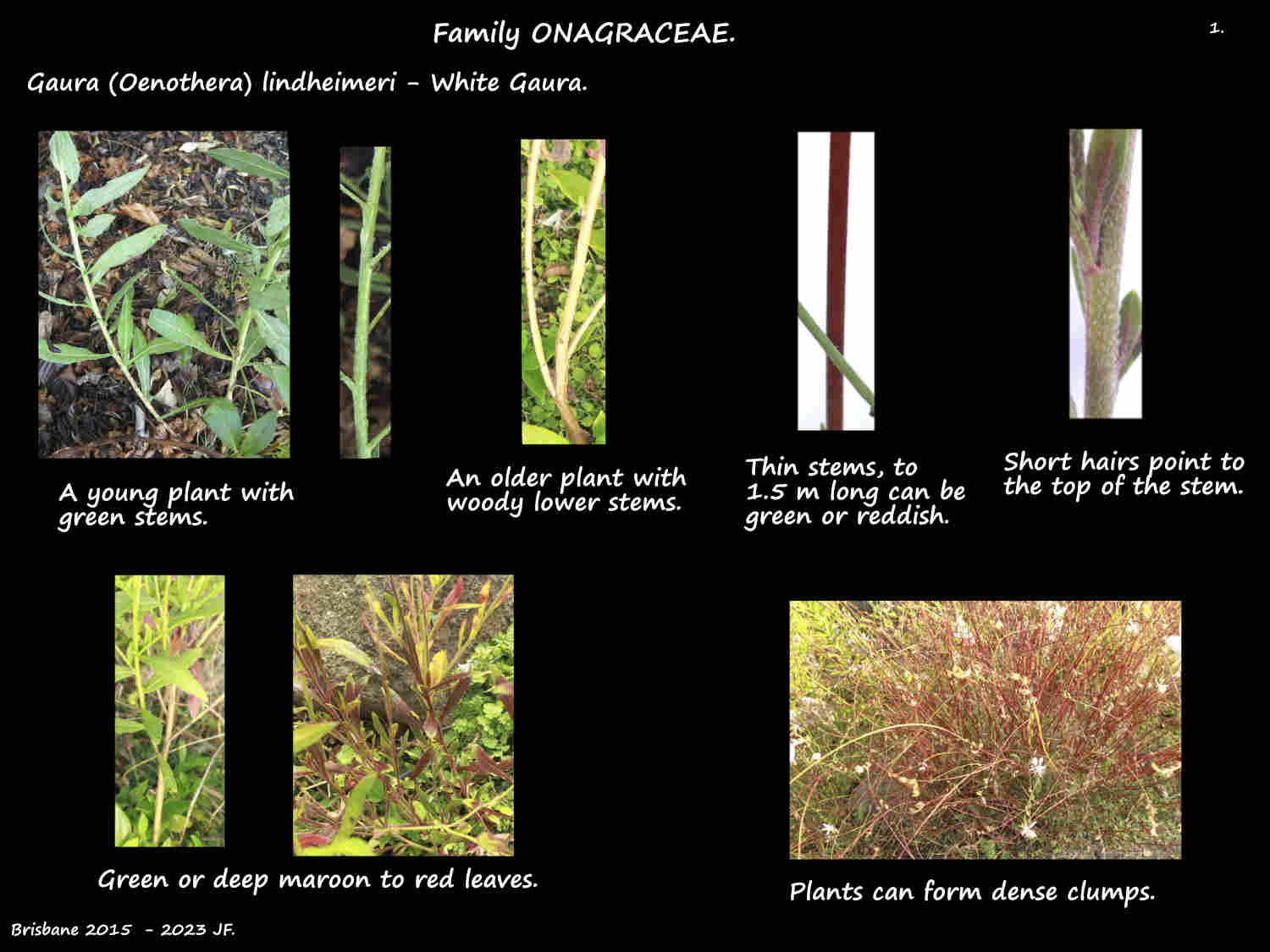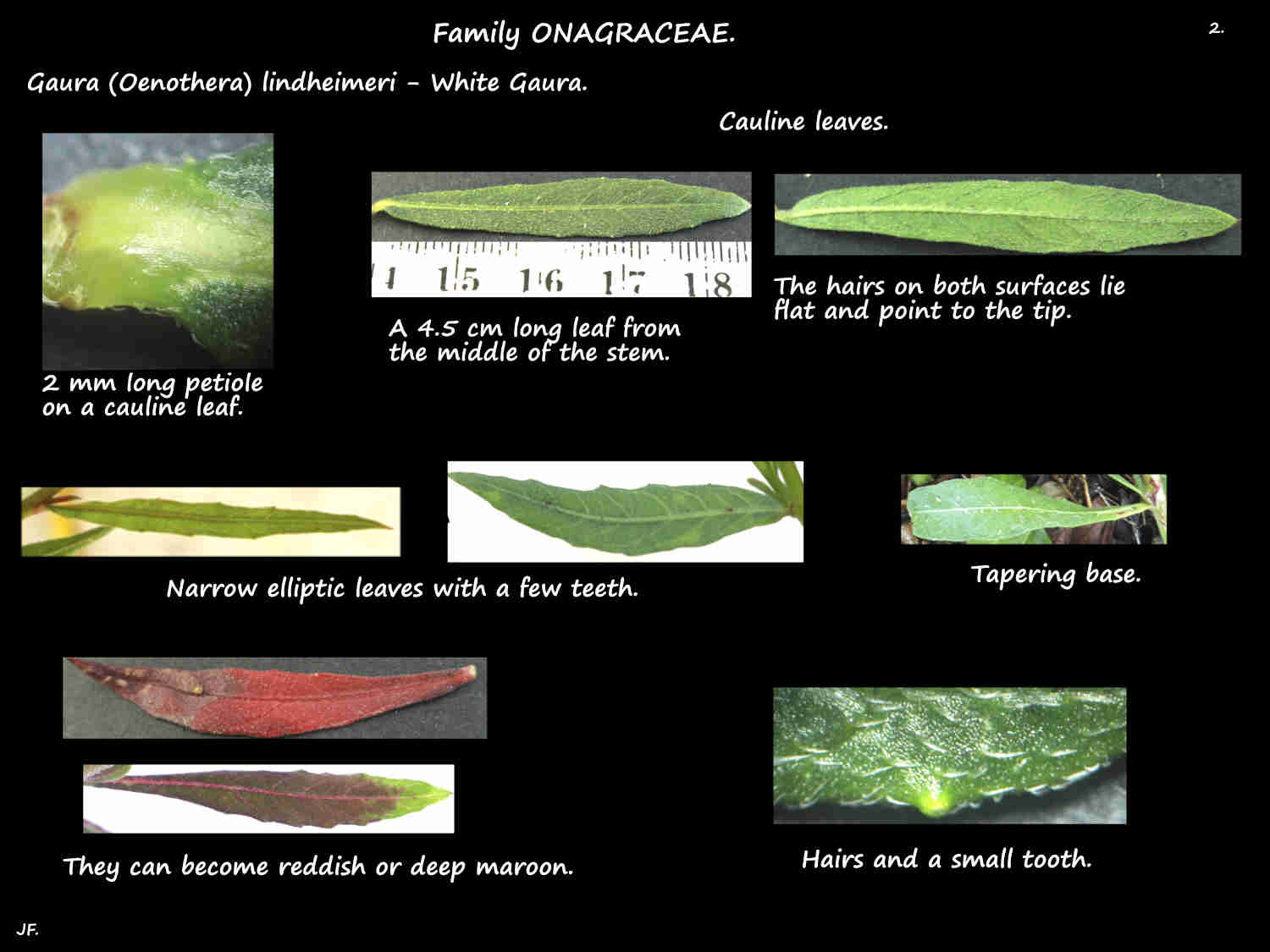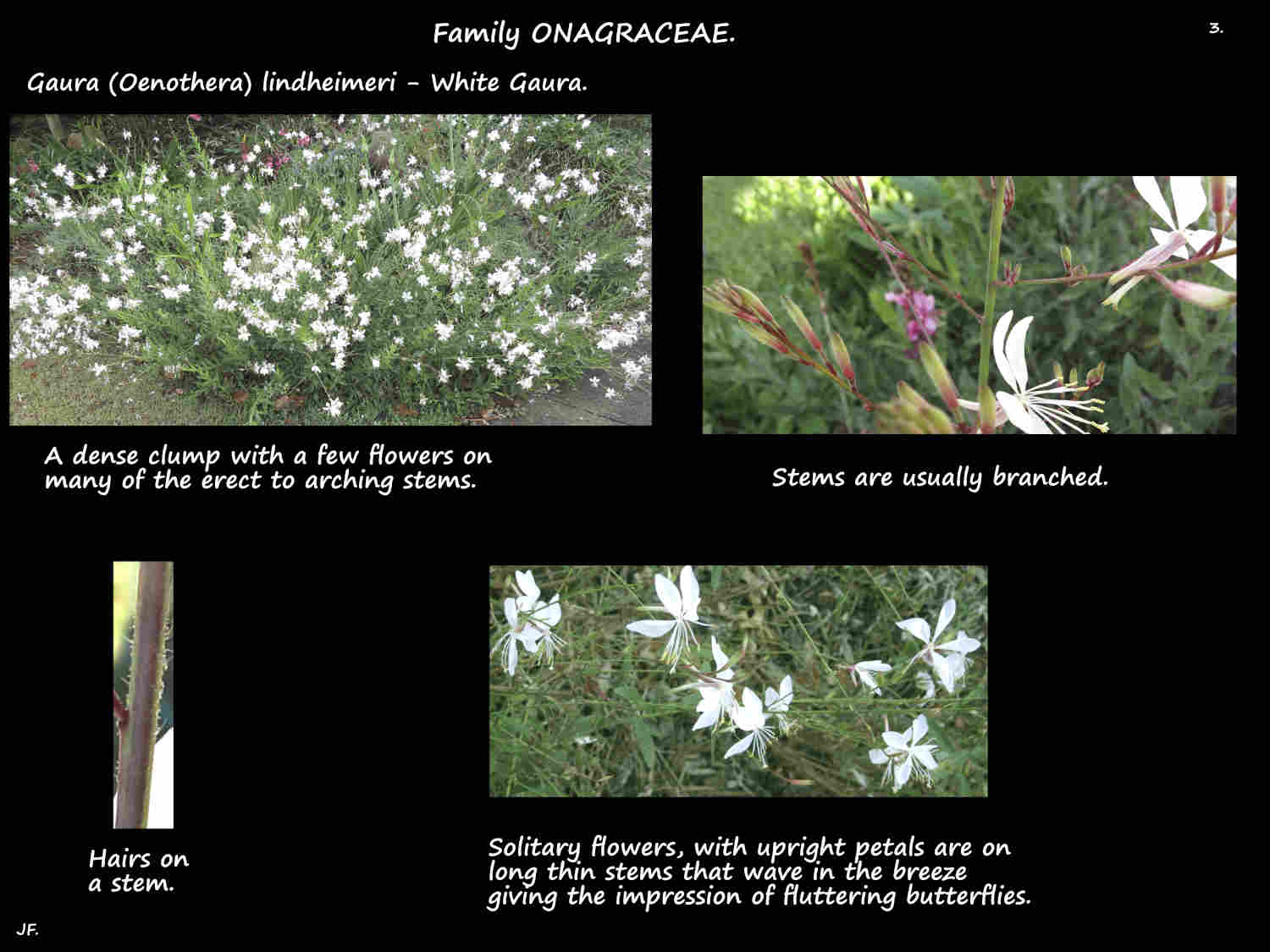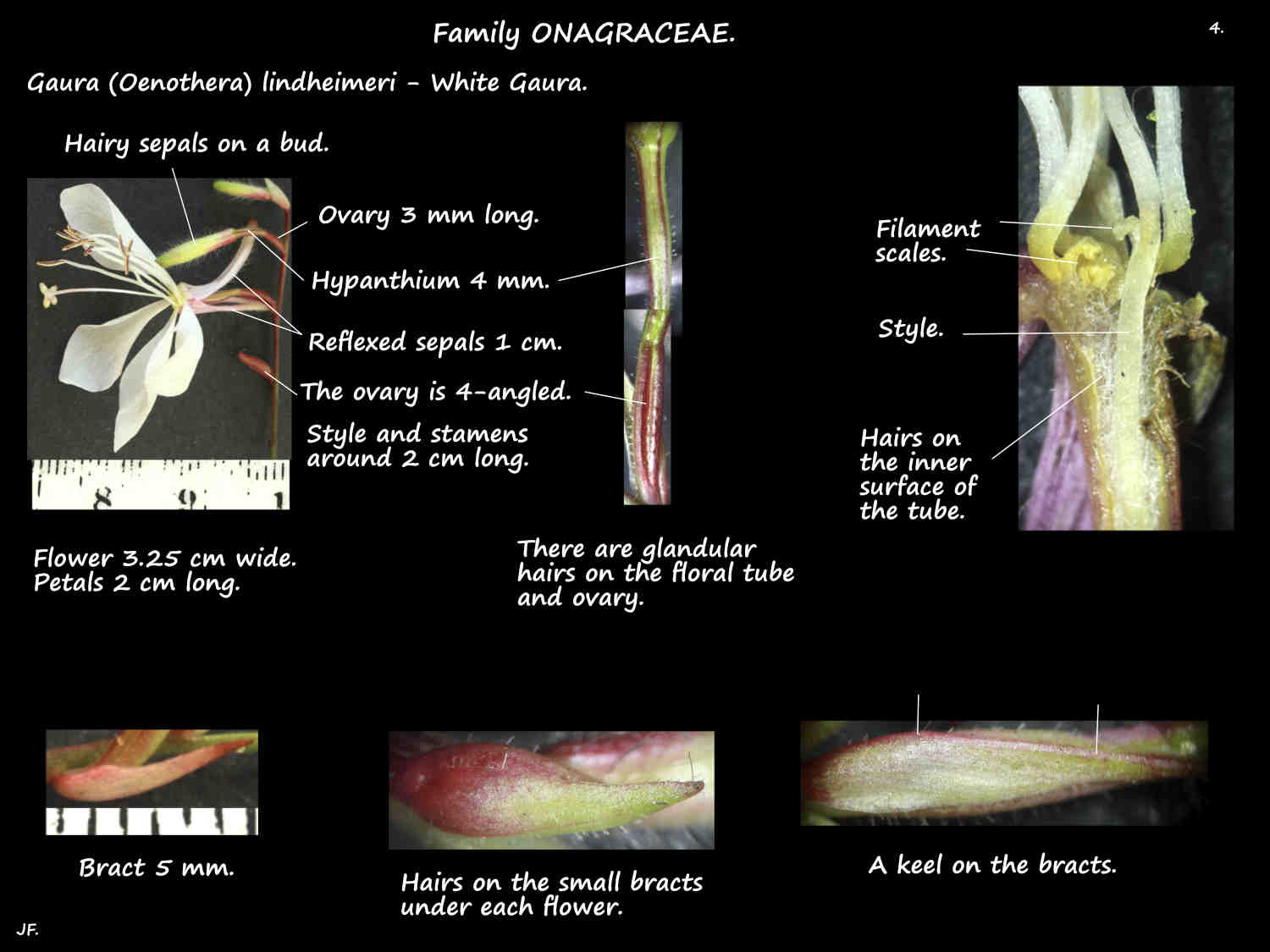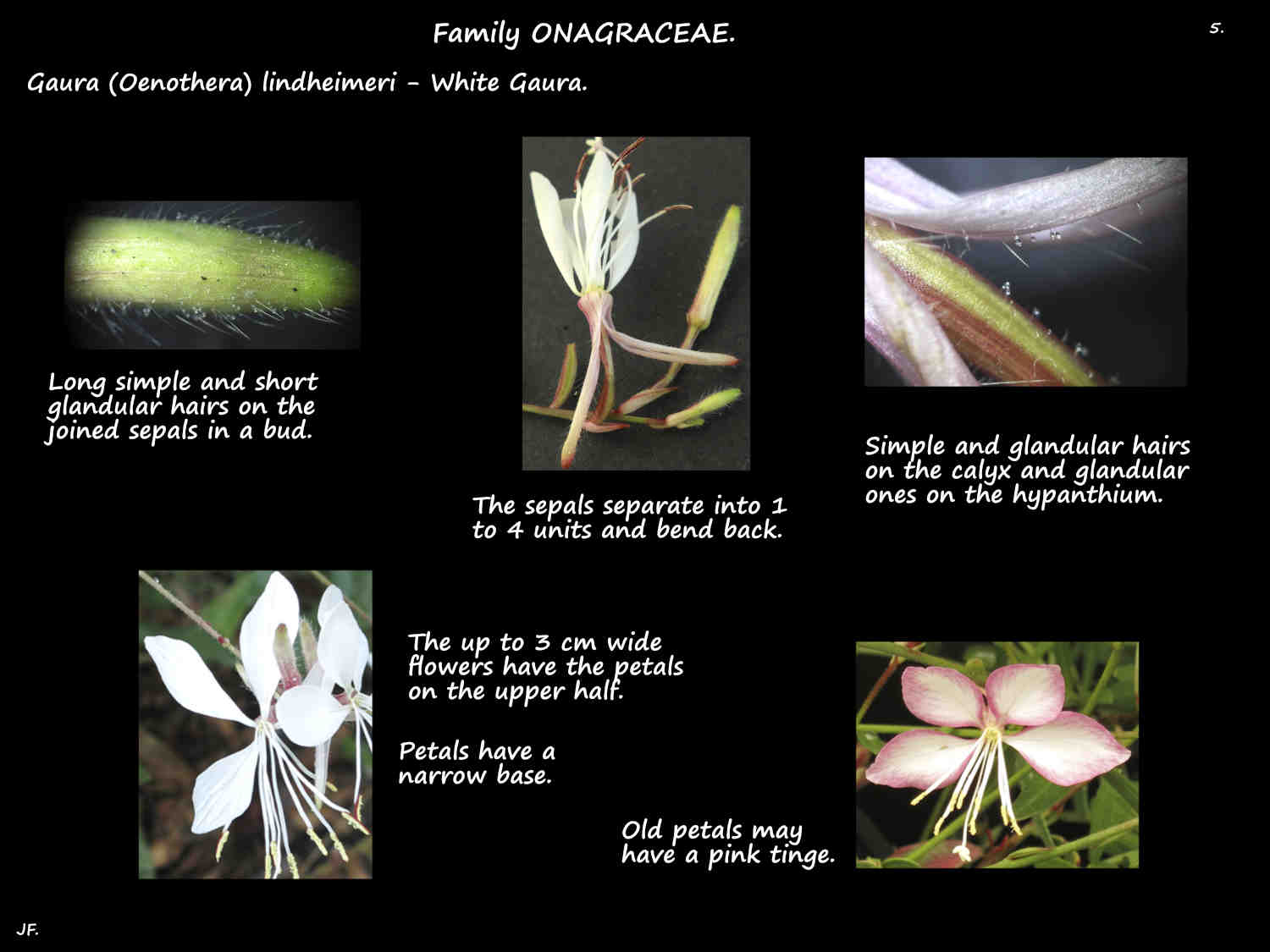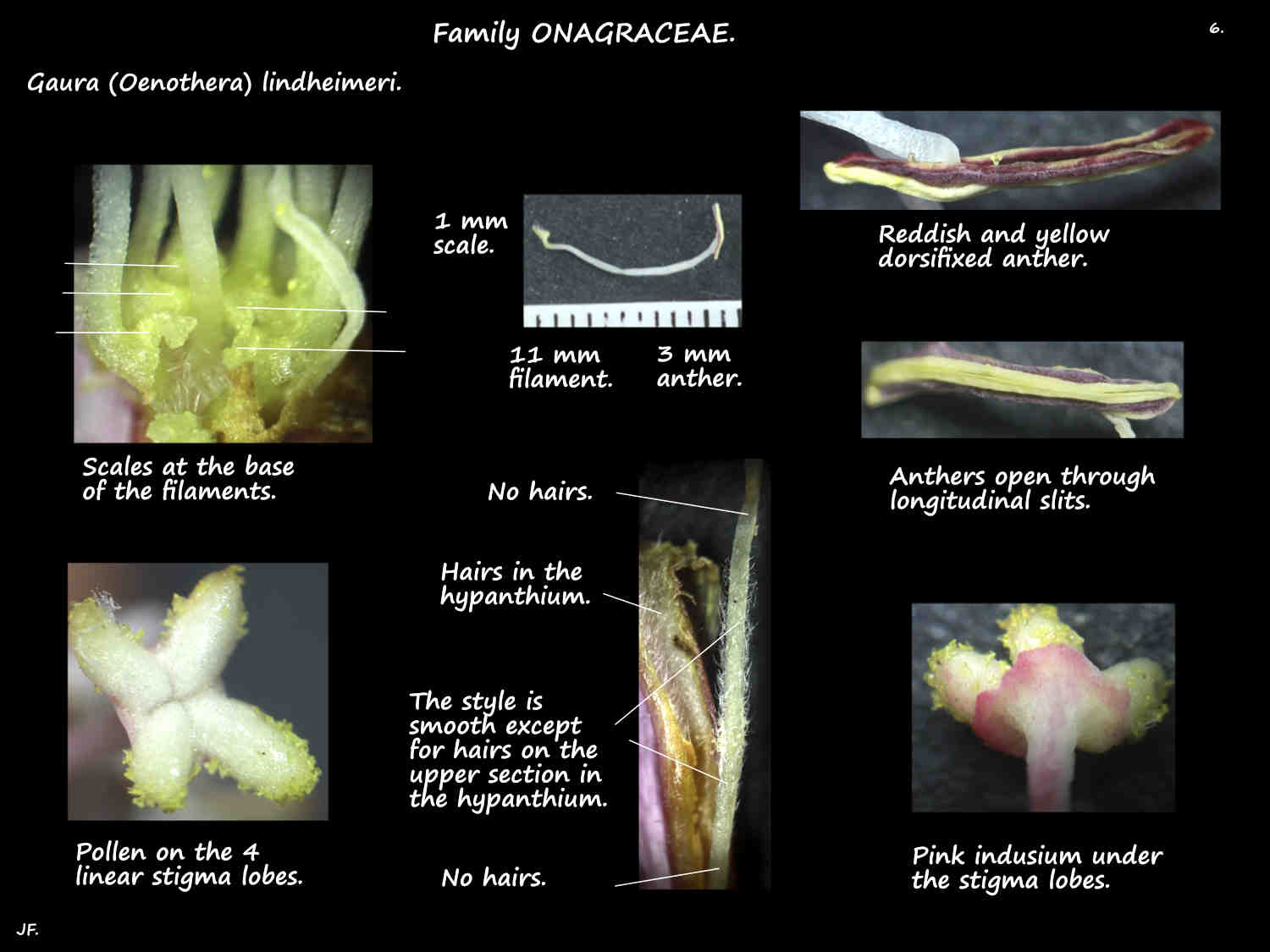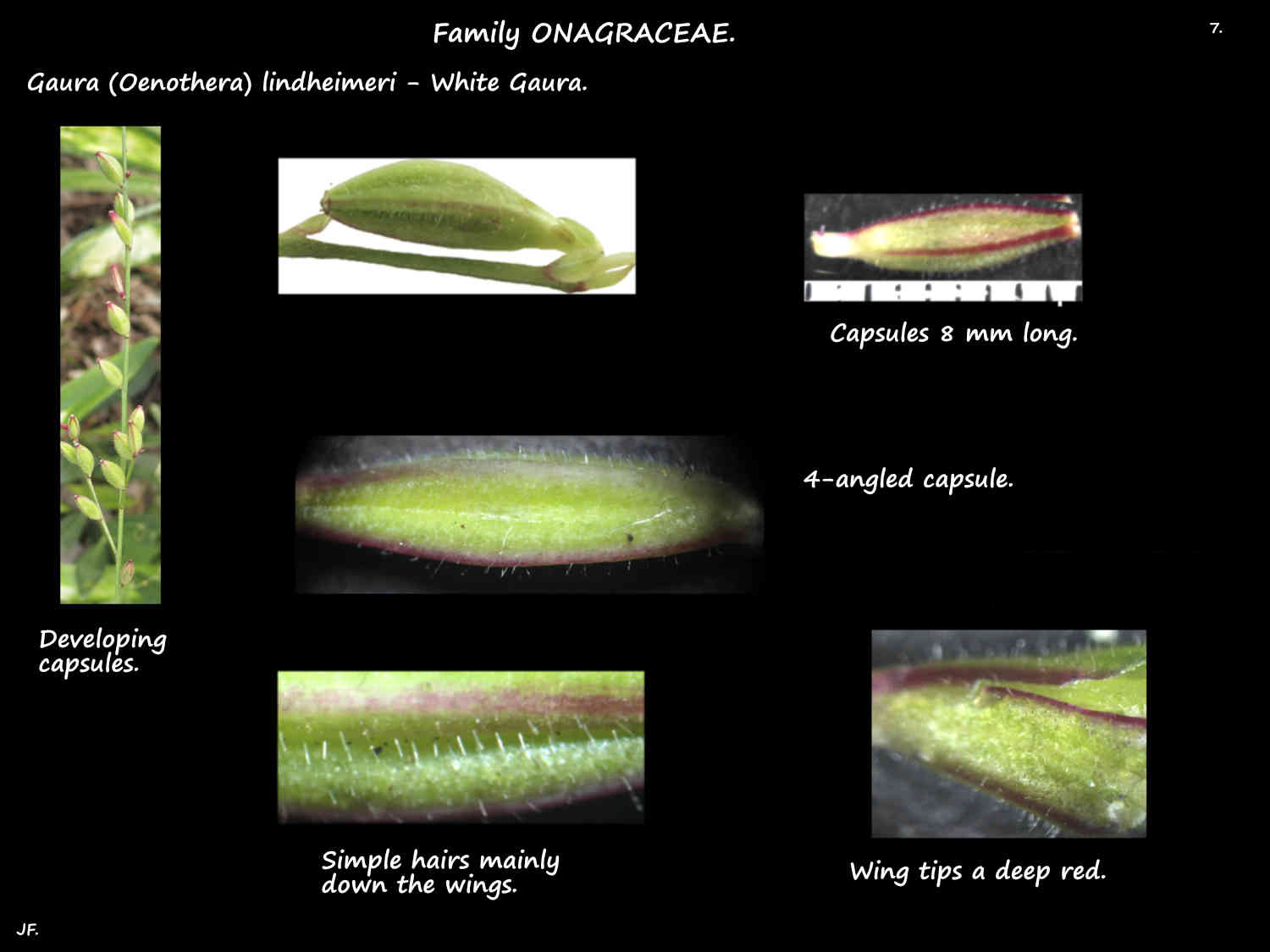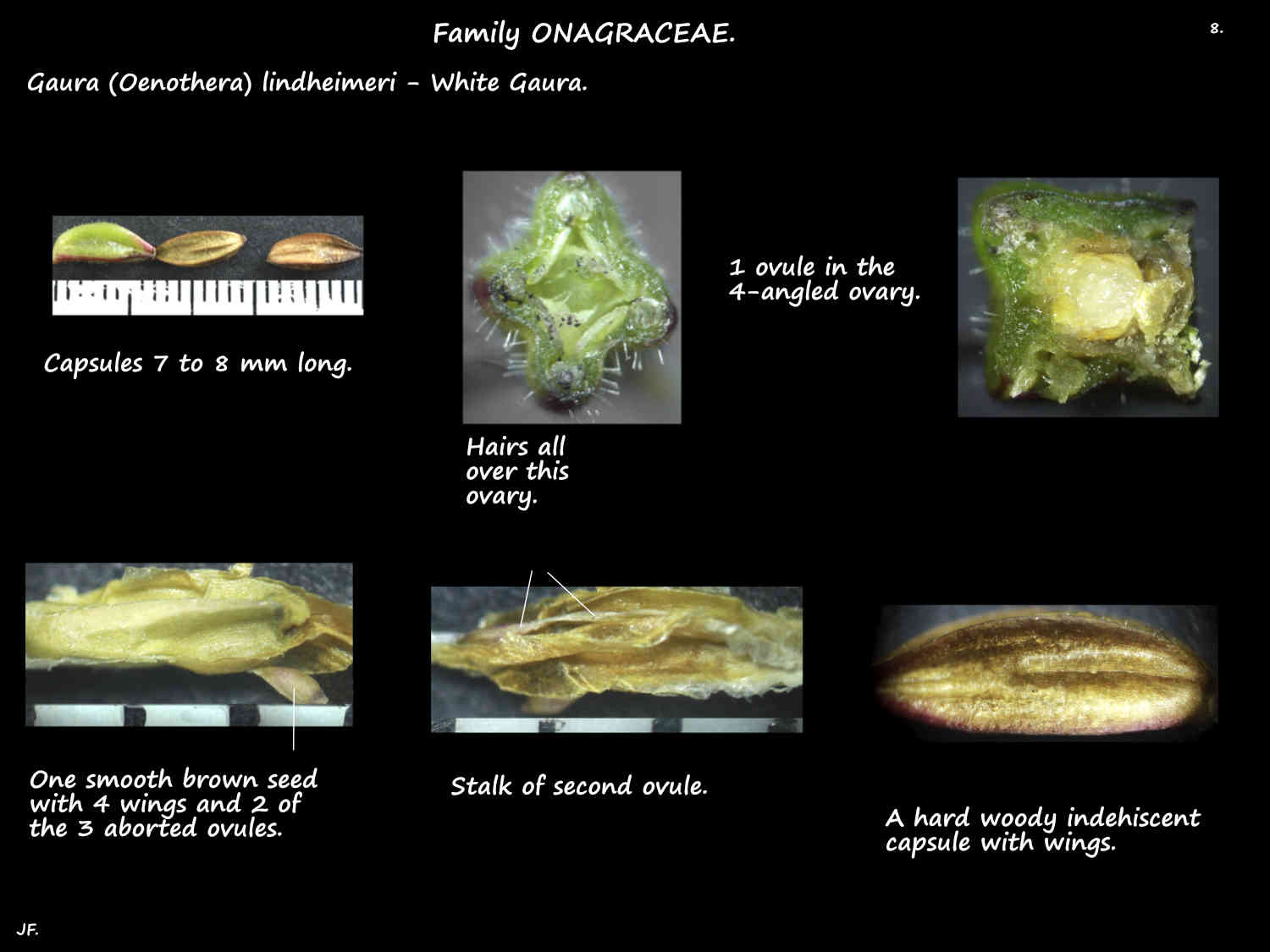Gaura lindheimeri = Oenothera lindheimeri.
Native to North America Butterfly Gauras are naturalised in Queensland.
They are herbaceous perennial plants up to 1.5 m high.
The basal leaves and stems grow from a woody underground stem or rhizome.
Basal leaves, on a petiole 1-4 cm long are up to 15 cm long.
Cauline leaves are those spread out along the thin upright to spreading stems.
These rarely have a petiole and then it is only a few mms long.
The lowest ones are up to 10 cm long and they get shorter towards the top of the stem.
The narrow leaves, under 10 mm wide are elliptic with a pointed tip and a tapering base.
They are green to deep maroon with widely spaced teeth on a wavy edge.
Many of the fine spreading and glandular hairs wear off.
The basal rosette of leaves dies off but the long branched stems can form a dense shrub-like plant.
Each stem and its branches can have a few to many flowers along it.
At the base of each flower is a small reddish bract that falls off.
Flowers, only lasting a day open from the base up so a plant can have some flowers most of the time.
The stalkless flowers, up to 3 cm across have 4 sepals and petals.
The hypanthium or floral tube, around 5 mm long is squarish in cross section.
The inner surface is covered with spreading white hairs and there are 4 nectaries at the base.
The sepals, around 1 cm long have coarse spreading and glandular hairs on the outer surface.
The sepal edges are stuck together in the bud but as the petals open they separate into 1 to 4 sections
that bend back beside the hypanthium.
The oblanceolate petals, up to 15 mm long all point upwards.
They are white but may become tinted with pink as they age.
There are 8 stamens in 2 whorls of slightly unequal lengths.
The white filaments have a small yellow appendage or scale on the inner side of the base.
The filament attaches near the base of the dorsal surface of the red and yellow anthers.
The inferior ovary has 4 ridges externally and initially 4 locules each with 1 ovule.
The locules can merge leaving a single locule with 1 ovule.
The style holds the 4 linear stigmas at about the same level as the anthers.
There is a bowl-shaped indusium below the stigmas.
The indehiscent woody ellipsoidal capsules, around 7 mm long have 4 prominent angles or wings.
There are numerous cultivars including dwarf plants around 40 cm high but most are around 1 m.
Leaves can be green, burgendy or variegated with yellow edges.
Flowers come in white, white ageing to pink or shades of pink including a deep pink.
J.F.

